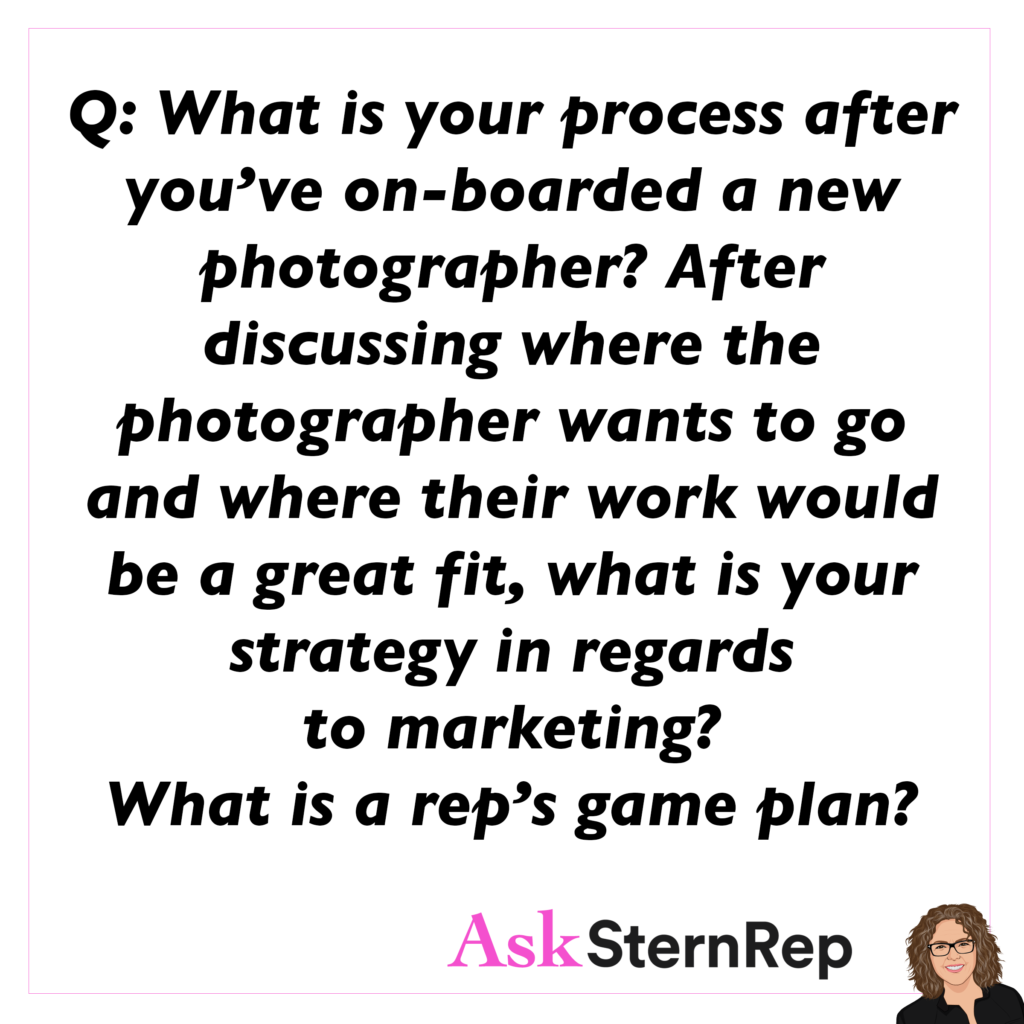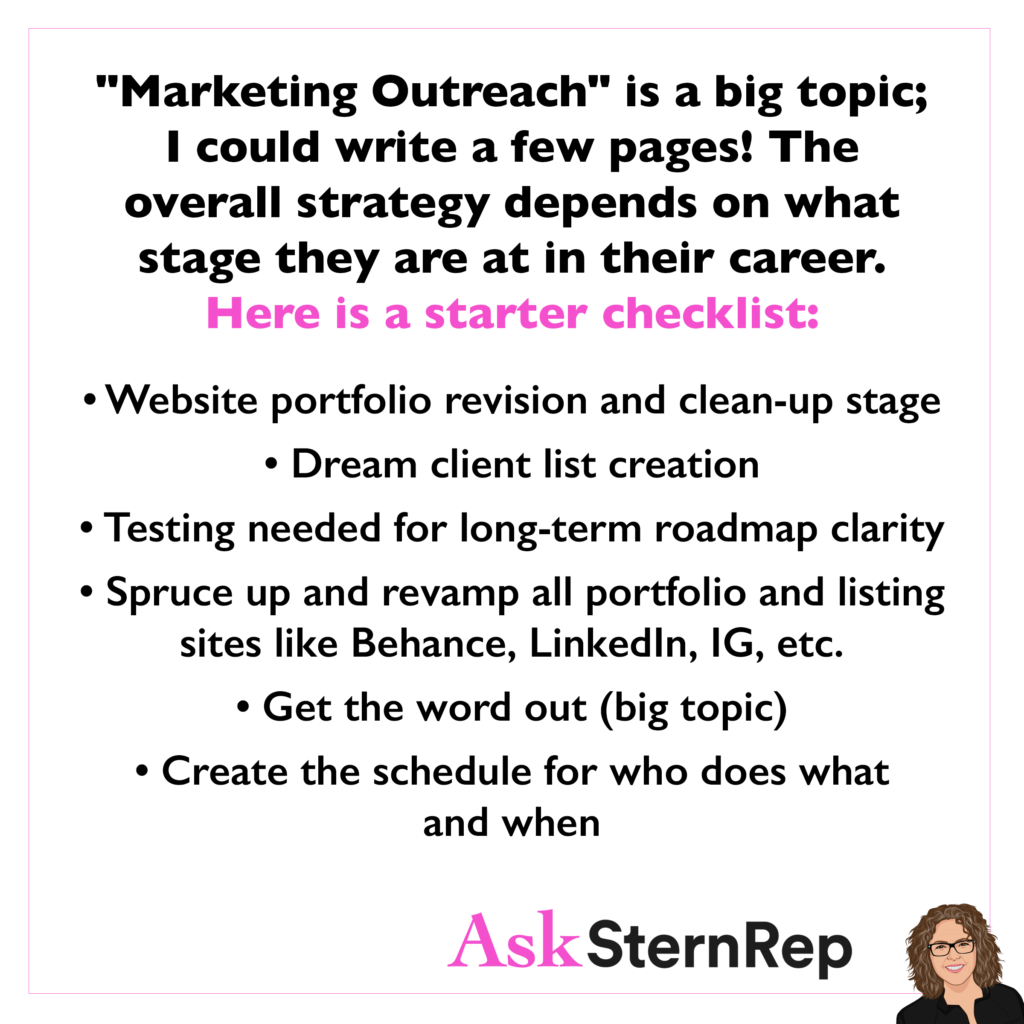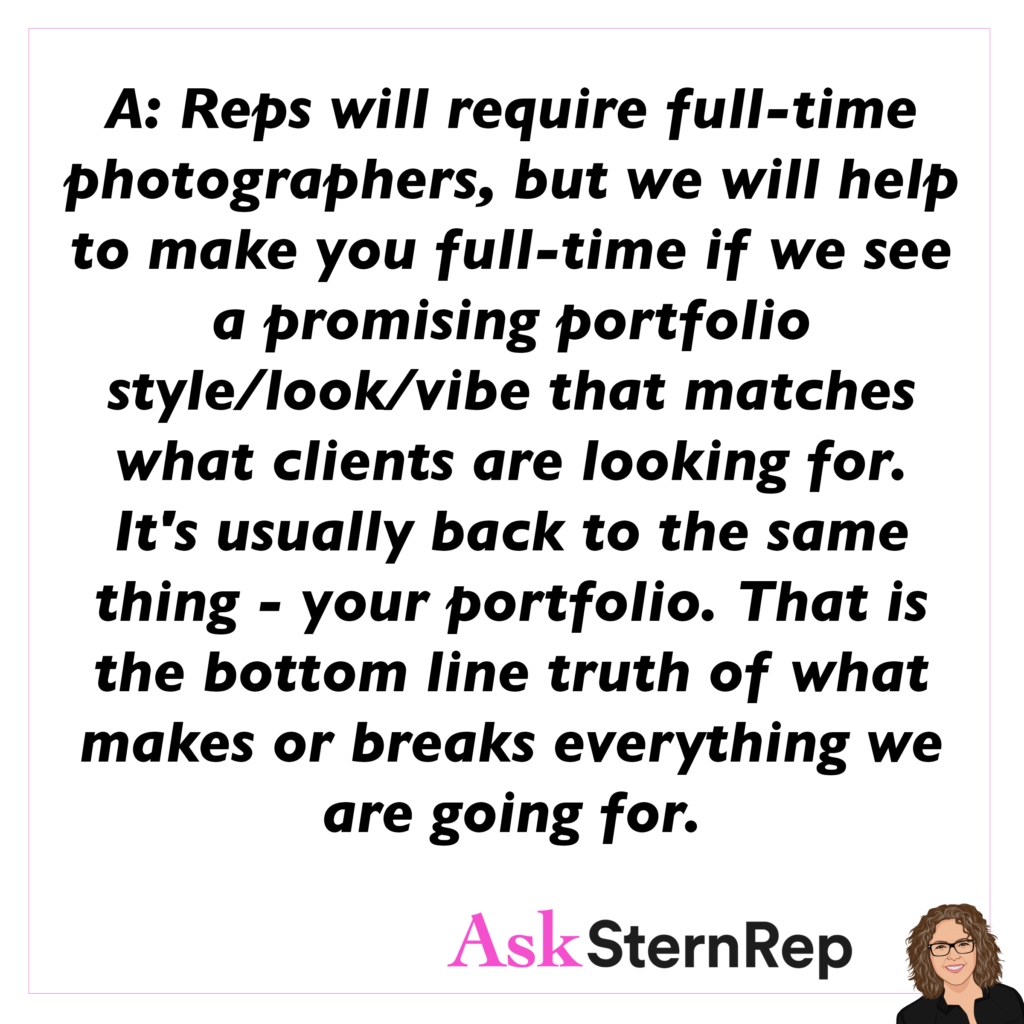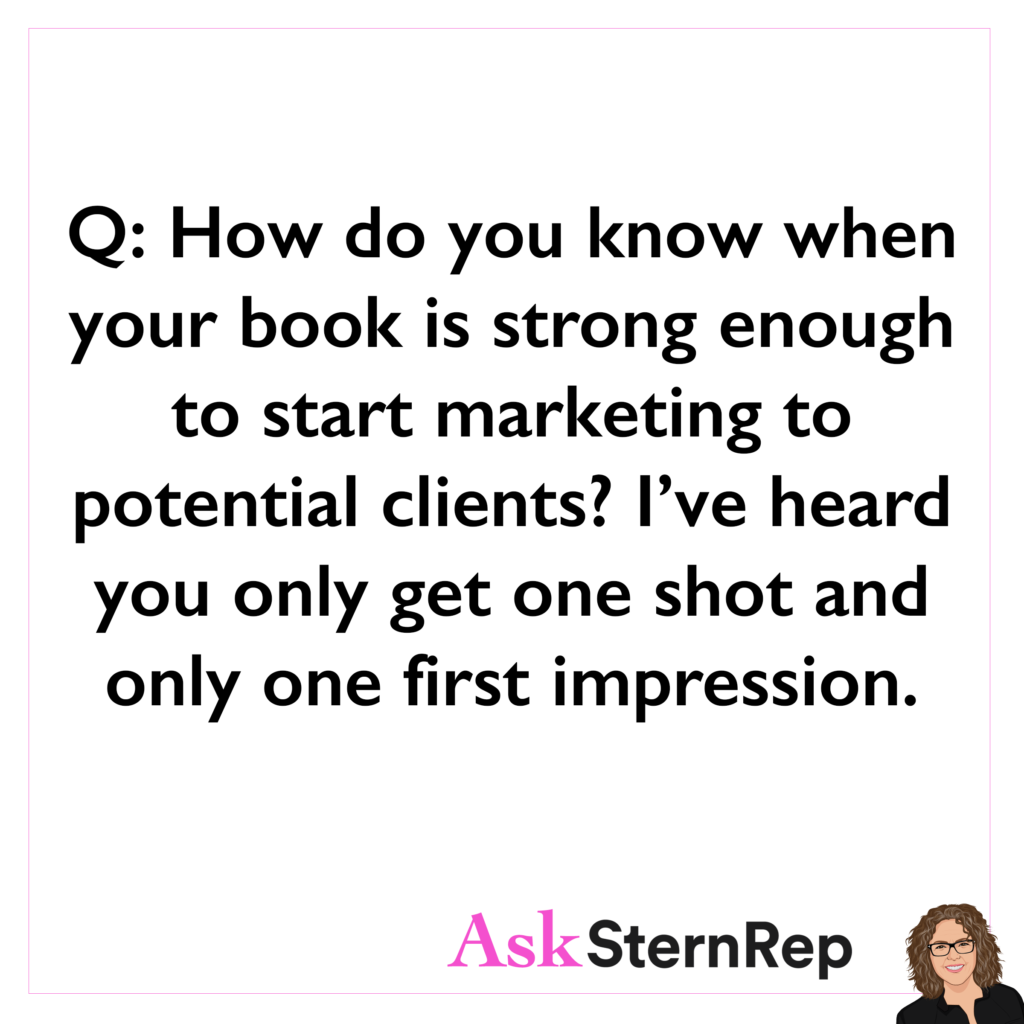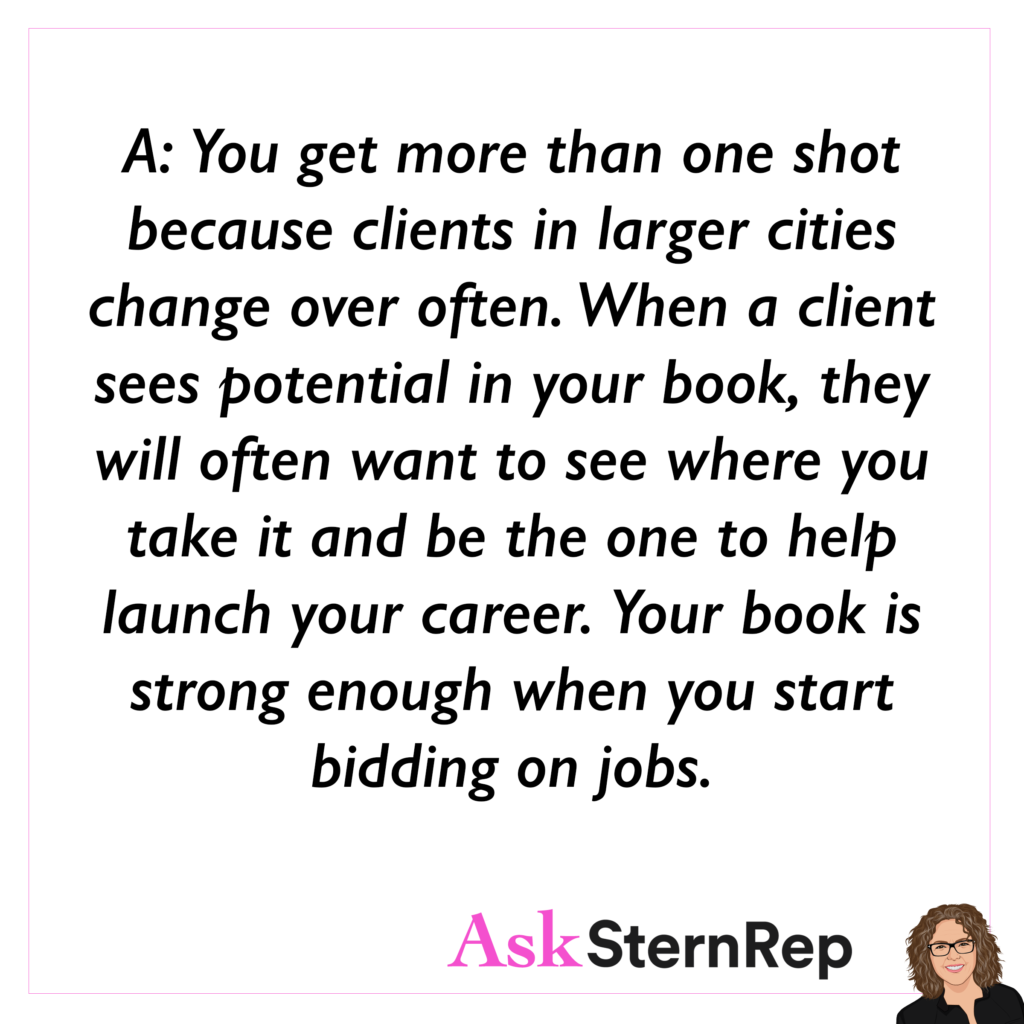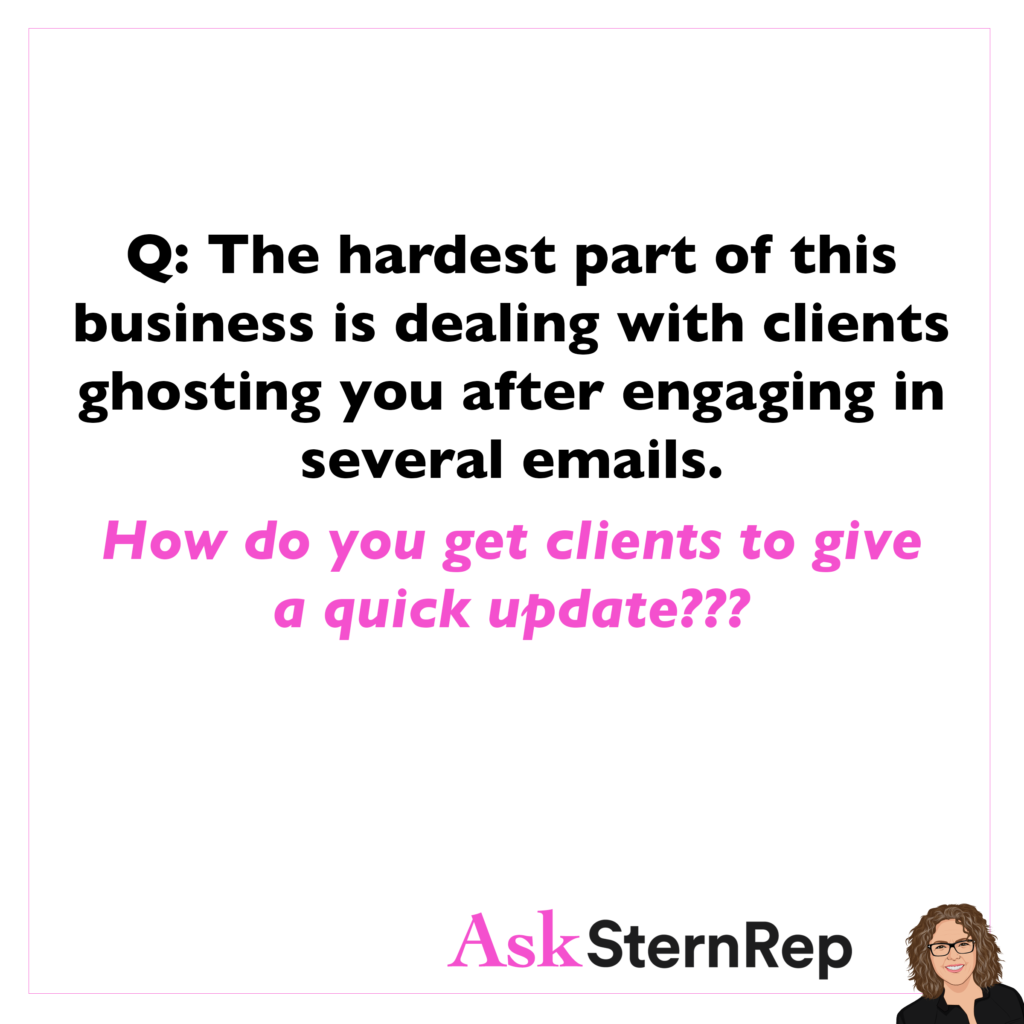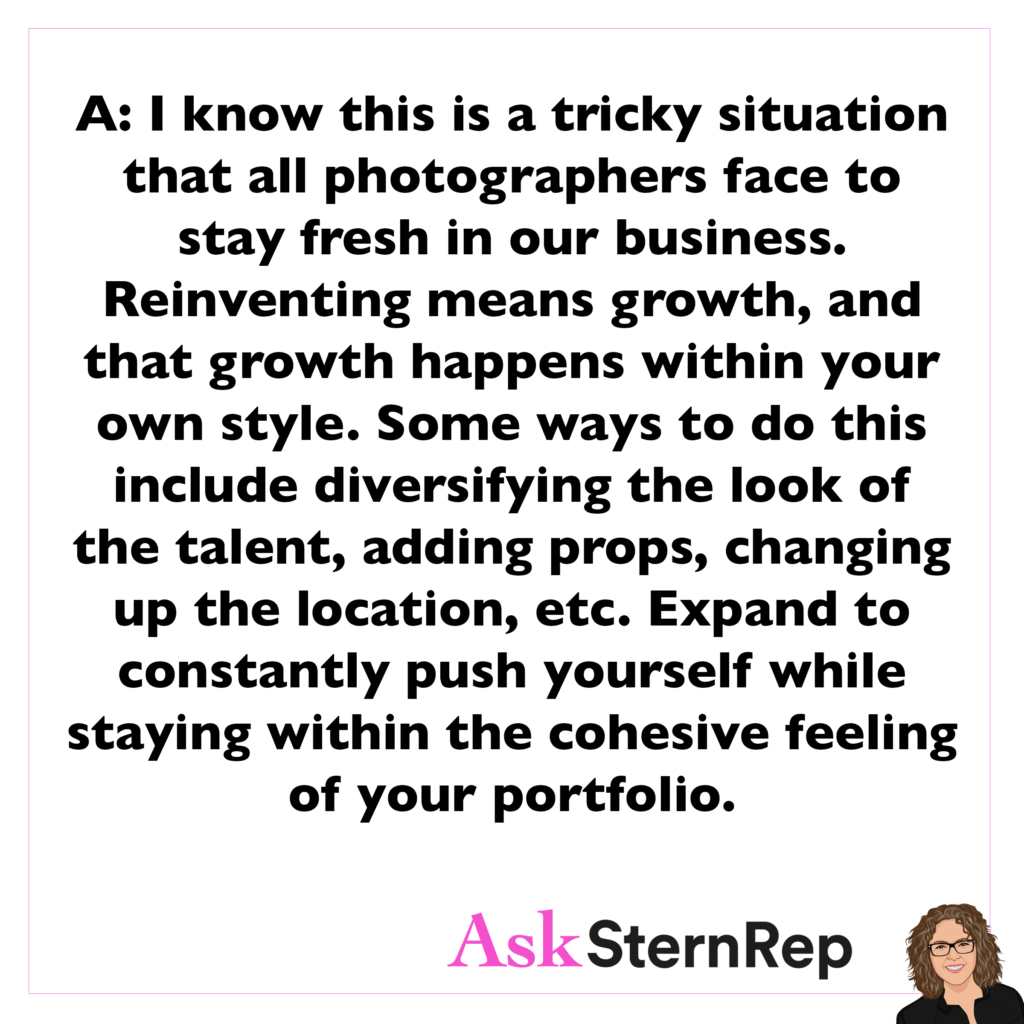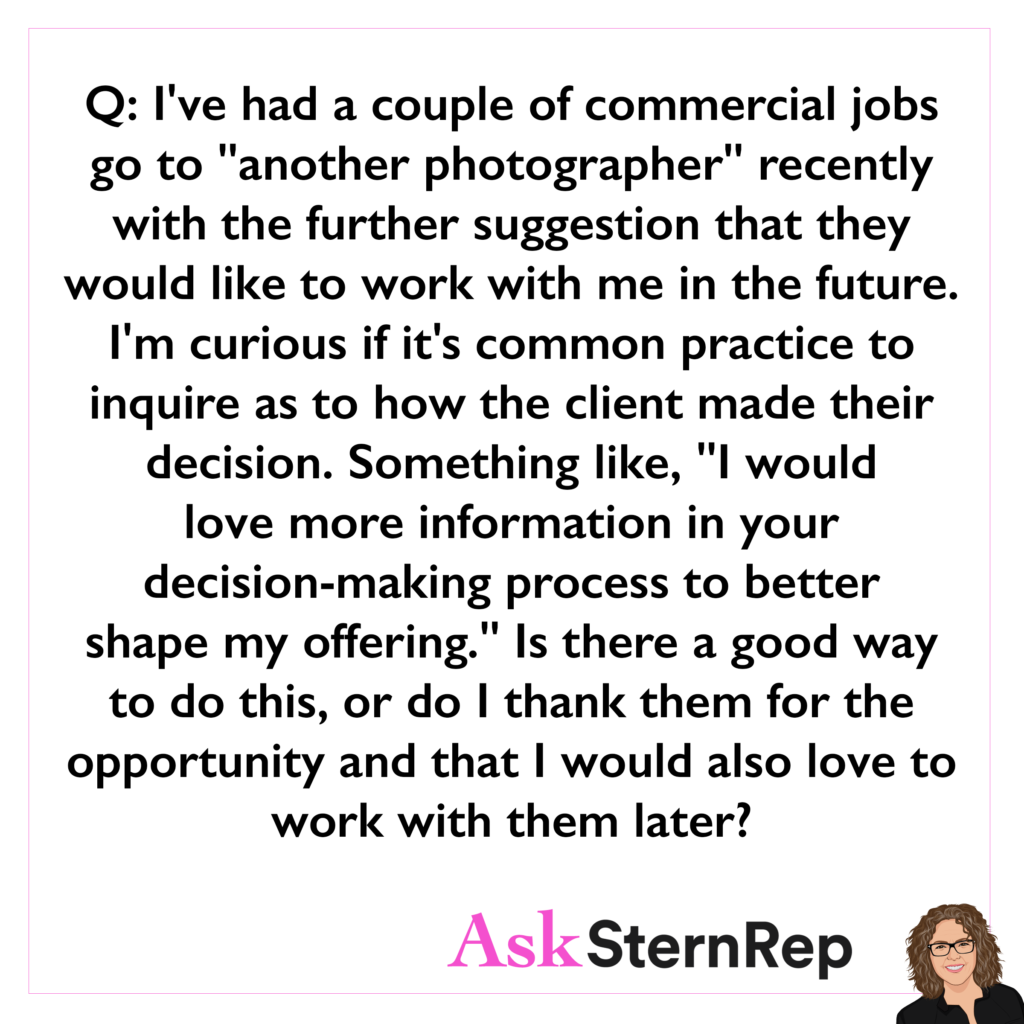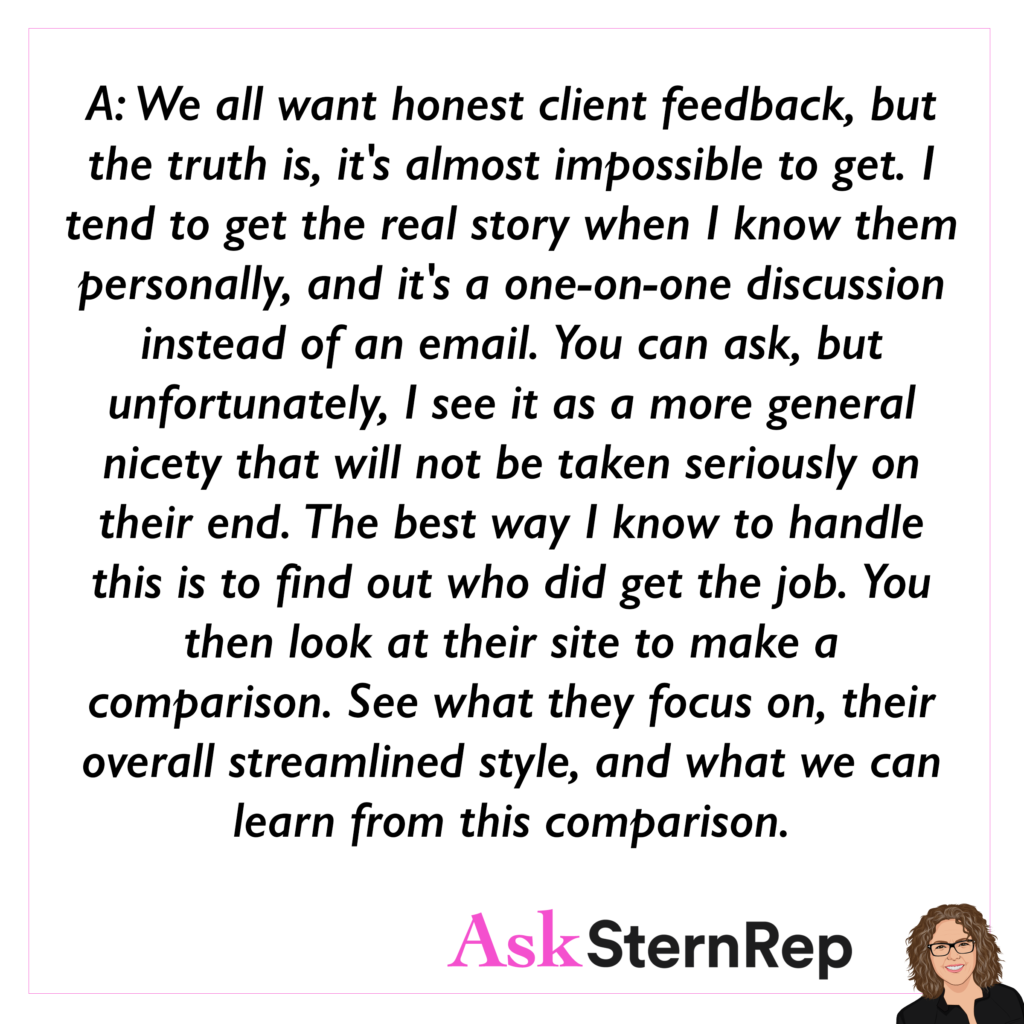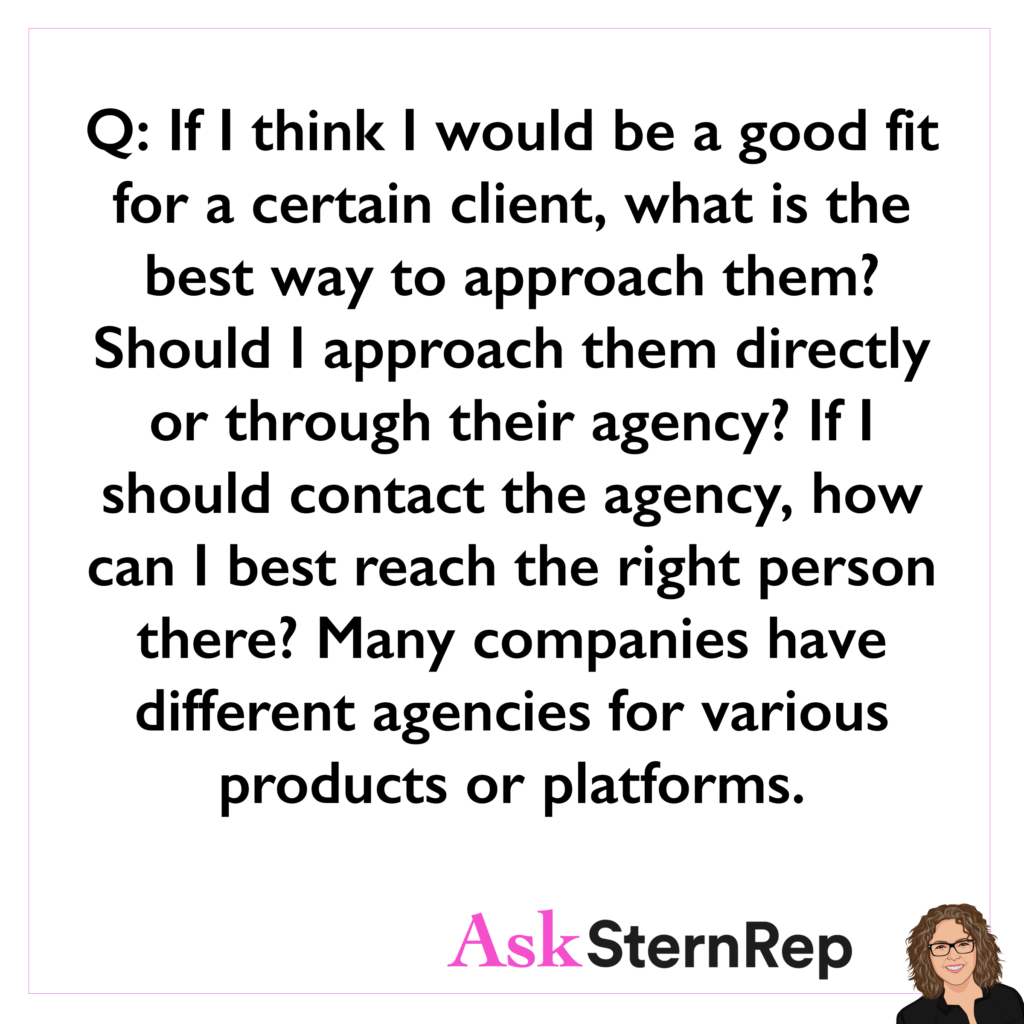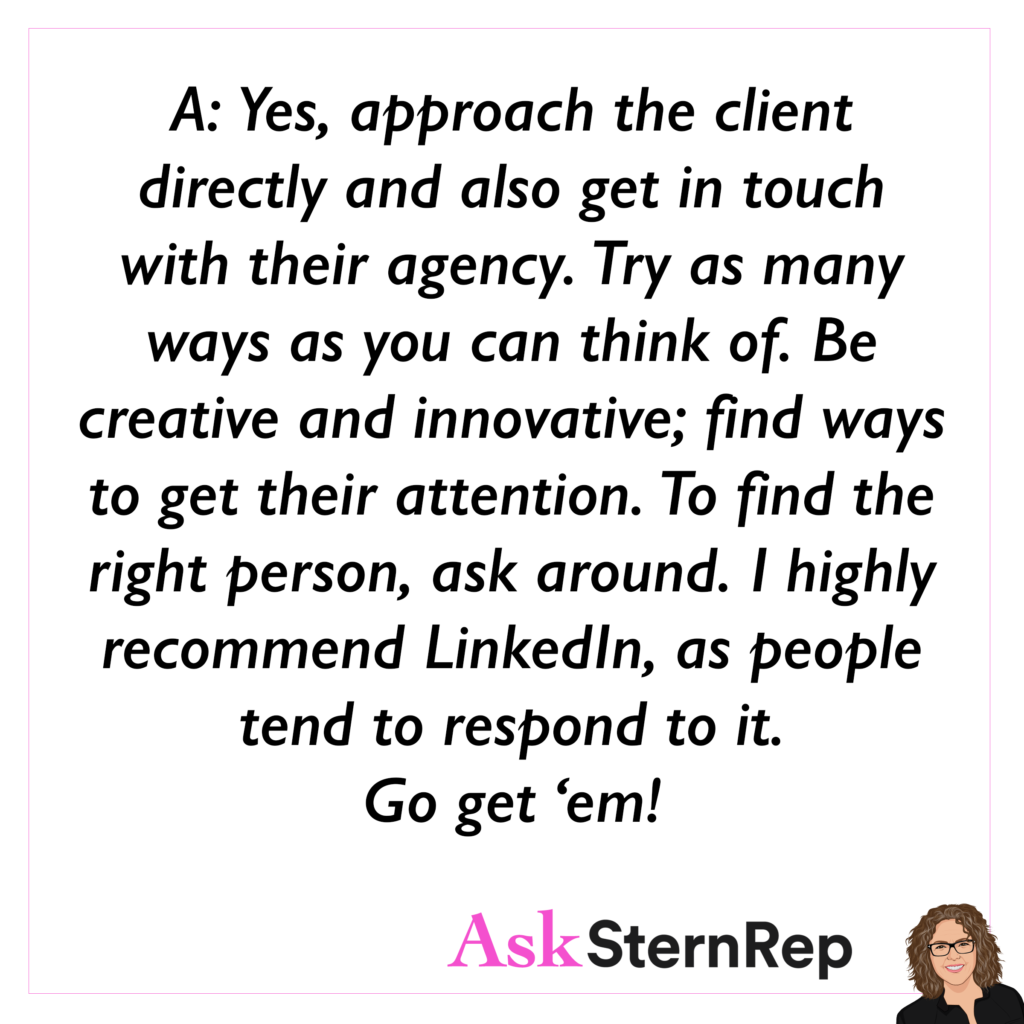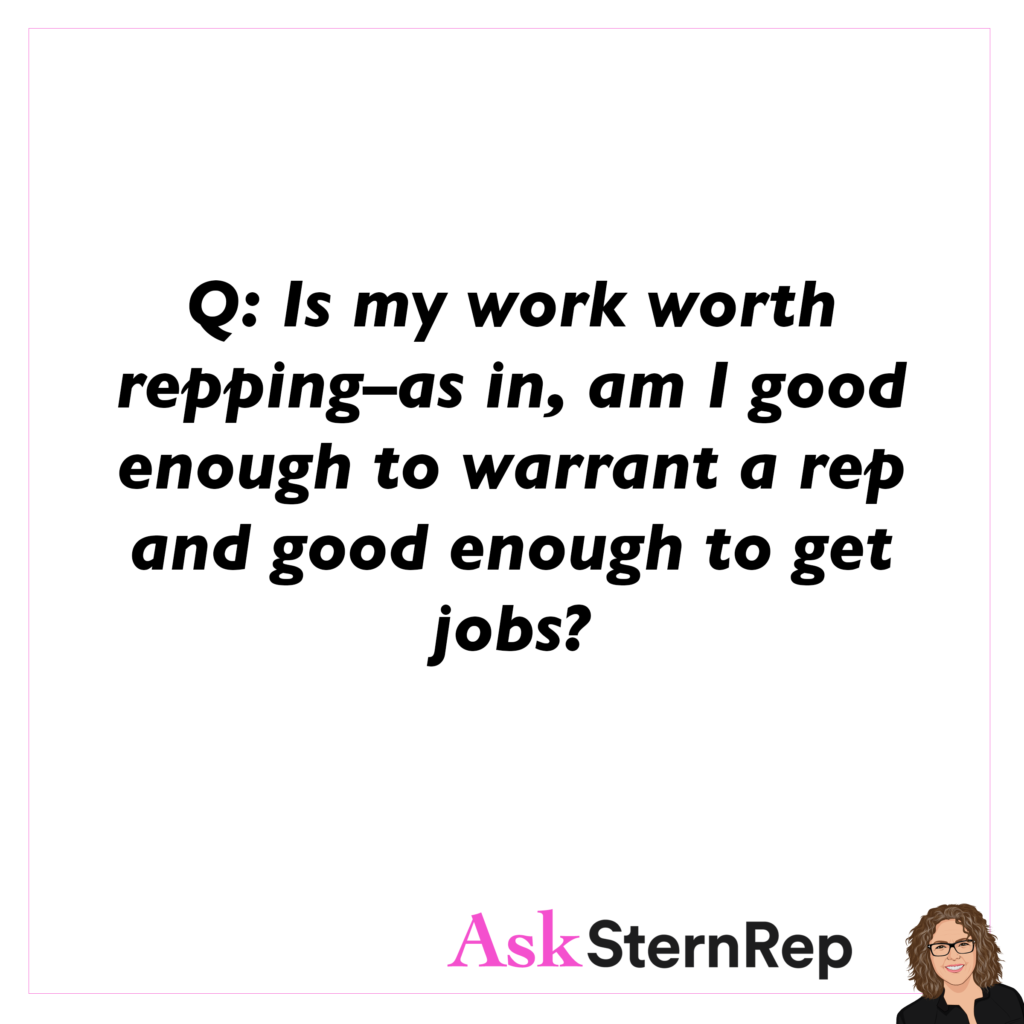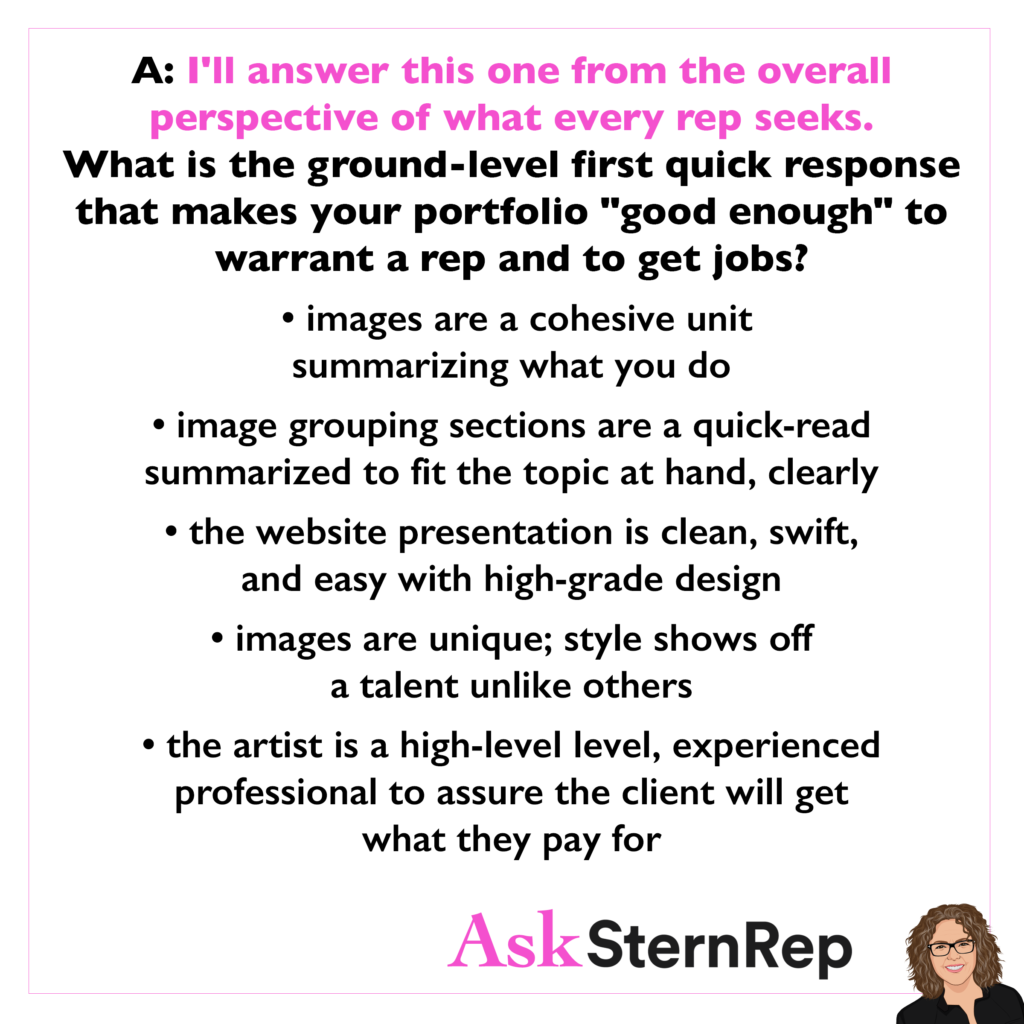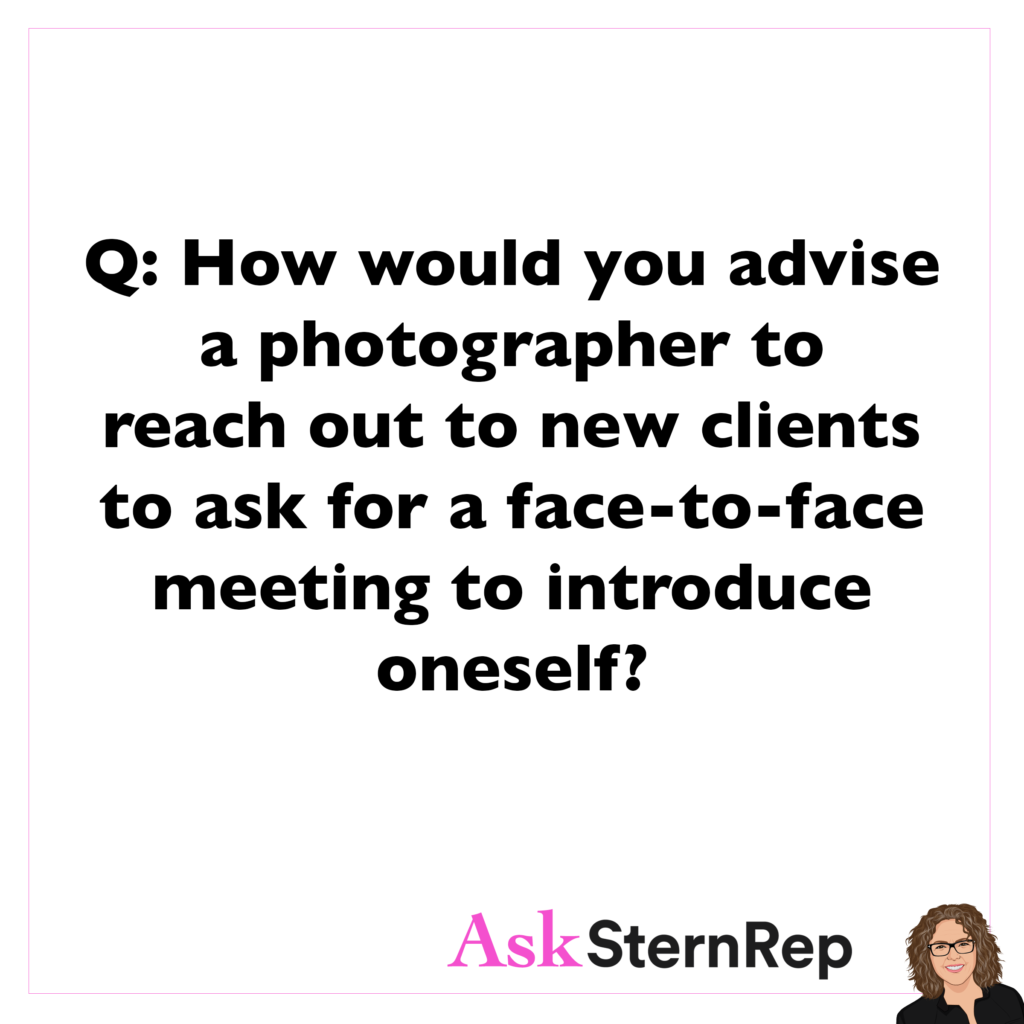
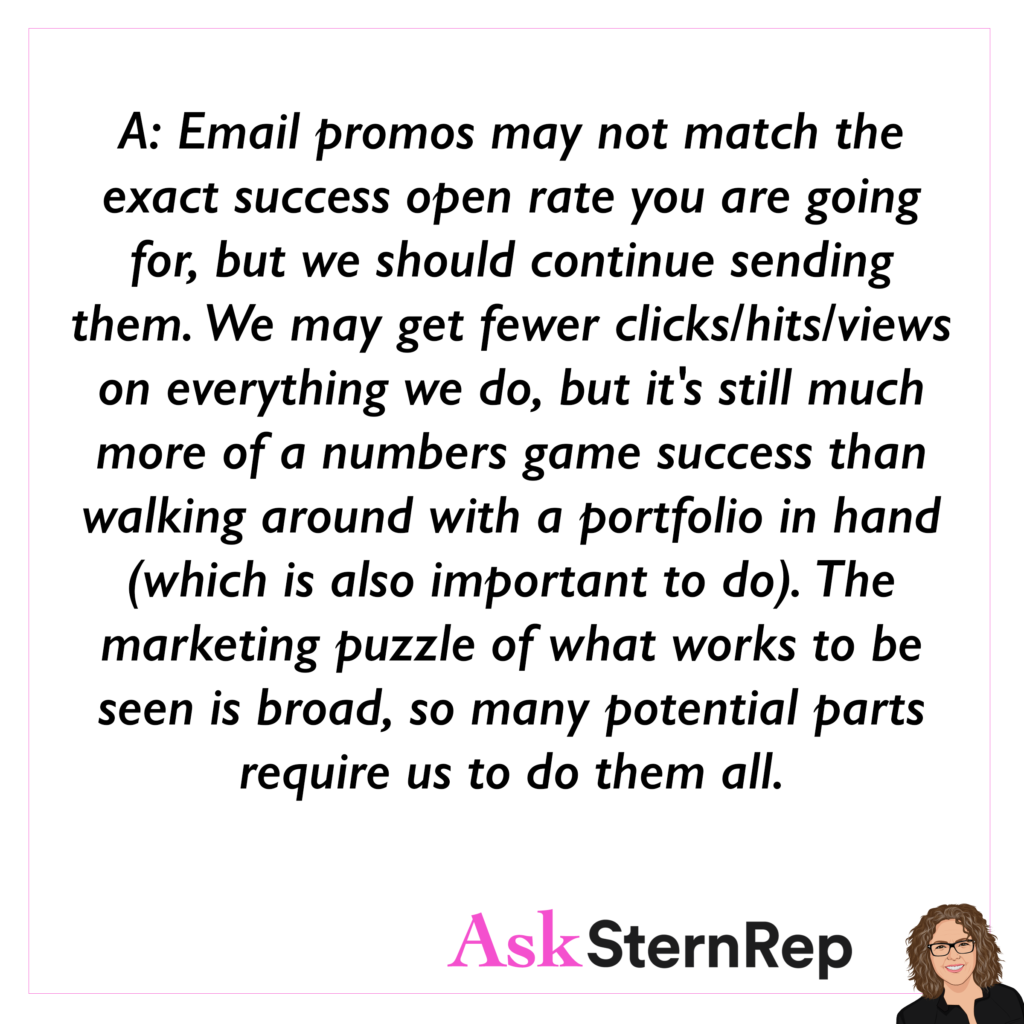
Q:
Email promos are barely working, and I hate to give them up because I don’t know what else will work better. Please advise.
A:
Email promos may not match the exact success open rate you are going for, but we should continue sending them. We may get fewer clicks/hits/views on everything we do, but it’s still much more of a numbers game success than walking around with a portfolio in hand (which is also important to do). The marketing puzzle of what works to be seen is broad, so many potential parts require us to do them all.

